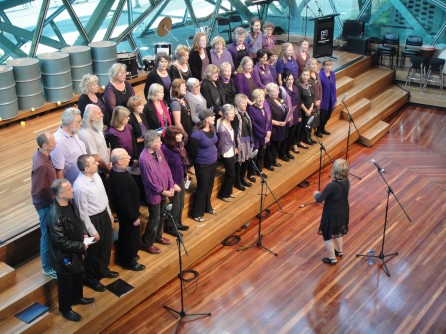Many years ago it was common to think it impossible, misleading and wrong to measure broad intangible concepts like, arts, culture and the environment. It just didn’t feel right to put a value on these things. Now it is well accepted to measure the value of the environment, as well as arts, culture and wellbeing.
Economic impact studies are the most complex form of measurement of intangible concepts like arts, culture and the environment. A highly specialised field of practice, it involves the measurement of the employment, output and productivity consequences of cultural activities. Properly executed, economic impact assessments are essential for economic development agencies to see the arts, culture, or the environment as instruments for economic development and to understand their return on investment on arts and cultural programs.
Australian arts strategist Julianne Schultz recently called on the arts sector to be more ambitious in measuring the intrinsic value of the work produced by artists. I agree with her view. But is it always necessary to conduct a complex economic impact assessment in order to assign some sort of value to arts and culture? It depends on the situation and the project brief.
I have been faced with the challenge in recent years of evaluating arts-led initiatives throughout Australia for a number of funding bodies. Having just been commissioned by Regional Arts Victoria to conduct an 18-month evaluation of the Small Town Transformations initiative, I am again excited by this new challenge. This evaluation – like the previous projects – does not require an economic impact assessment. I do not need to arrive at a dollar value for this arts-led initiative. Rather, I am assessing the extent to which the initiative has met its intended objectives. I am measuring what is measurable, meaningful and relevant to be able to understand the range of complexities that contribute to the value of the initiative without arriving at a dollar figure.
In recent years I discovered a wonderful reference book How To Measure Anything by Douglas Hubbard. Hubbard is an American who has developed measurement methodologies that have been used in a range of sectors where big decisions are based on factors that seem difficult or impossible to measure. He argues that anything can be measured, including intangibles, such as the arts and culture. He defines measurement as:
“A quantitatively expressed reduction of uncertainty based on one or more observations.”
In my case, ‘uncertainty’ would be considered to be future decisions by funding bodies to direct funding towards similar initiatives based on little or no evidence of their effectiveness.
When it comes to measuring intangibles, Hubbard claims there are four assumptions. I have found these helpful to keep in mind.
Assumption #1. Your problem is not as unique as you think
Hubbard argues that no matter how unique or difficult your measurement problem, it has been done before by someone else, perhaps in another field. The range of measures relevant to put a value on an arts or cultural initiative turn out to be fairly standard measurement problems as in other fields.
Assumption #2. You have more data than you think
It is not uncommon for arts organisations or funding bodies to have data and other relevant information already at hand, but perhaps filed away. All of the things we need to measure are also things that tend to leave tracks and with some resourceful digging it is always possible to find them.
Assumption #3. You need less data than you think
We need far less data than we think we do if we aim to reduce uncertainty or gain a firmer grasp on the value of something. It is often a common misconception that the higher the uncertainty, or the greater the complexity of the problem, the more data you need to reduce the uncertainty. On the contrary, when you know next to nothing (that is, you’ve never analysed it), you don’t need much additional data to provide some meaning and value.
Assumption #4. An adequate amount of new data is more accessible than you think
New observations are easier to obtain than you might think. When evaluating arts-led and creative programs and initiatives, it may mean counting things such as how many artists have participated, how many tickets sold to events, numbers of new professional partnerships formed, a count of new businesses involved, and how much additional funding was sourced. At the same time, conducting in-depth interviews with program participants and members of the public can add a rich layer of qualitative information that will add depth of meaning to the quantitative measurements.
Our cultural leaders are starting to emerge from the mindset that the value of culture is mysterious, something that can never be measured. The approach and complexity of measurement needs to be commensurate with the complexity of the problem. Measuring the value of the arts and culture is not always about arriving at a dollar value. It may be about collating a series of related or unrelated facts, figures and stories and weaving them together to make some sense. I believe that by doing this we can contribute to the building of a body of knowledge that gives us a greater understanding of the tangible and intangible value of the arts.

